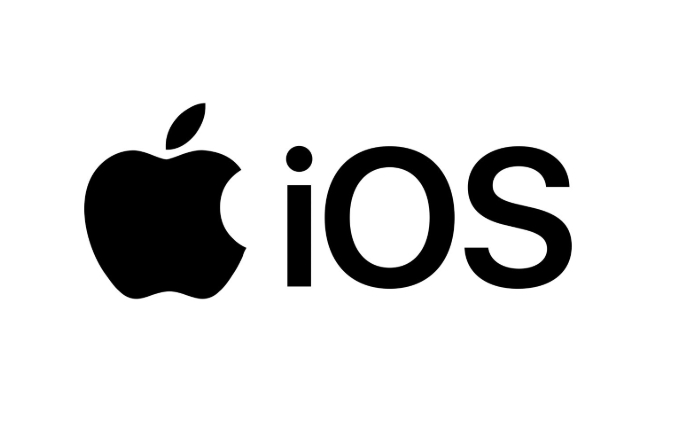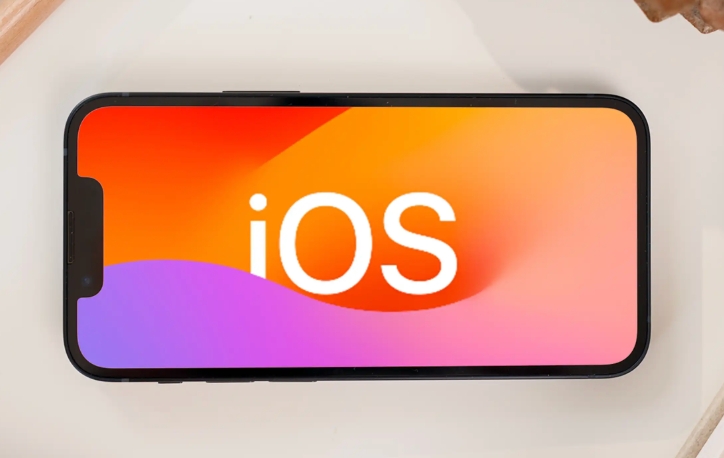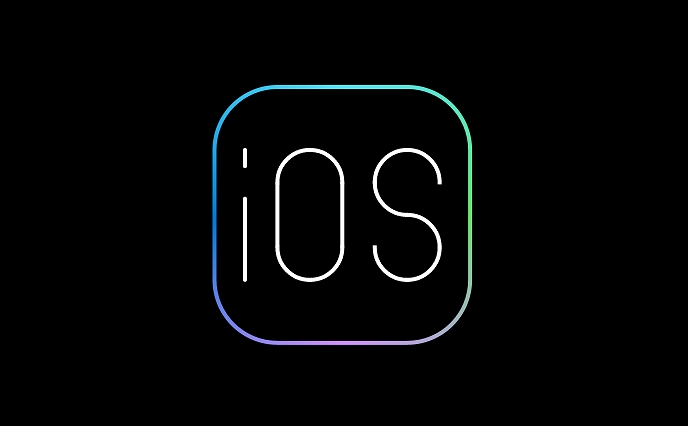How to add widgets to iPhone home screen
Jul 13, 2025 am 12:52 AMTo add widgets to the iPhone home screen, you must first enter the "Edit Home" mode. The method is to long press the App icon to shake it, then click the " " sign in the upper left corner of the screen to enter the widget library, select the required widget and size, then click "Add widgets", and then click "Complete Custom" at the end; common problems include installing the corresponding app first, widgets cannot be directly dragged to the negative screen, and can be reoperated when the " sign is not found; in addition, the negative screen can also be managed separately by sliding to the bottom and clicking "Edit" to improve efficiency. It is recommended to use practical components such as weather, calendar, reminder items, batteries and shortcuts to improve efficiency.

Want to add widgets (Widgets) to your iPhone home screen? In fact, the operation is not complicated, but some details are prone to errors. As long as you master a few key steps, you can quickly put practical functions such as weather, calendar, reminders and other things on the home screen.

How to enter the Jia Enter mode?
To add a widget, you must first enter the "Edit Home" mode. Press and hold any App icon on the home screen until all icons start to sway, and then you are in the editing state. Note that you don’t just click it, but press it for a long time . The reactions of different iPhone versions may vary slightly. This method applies to iOS 14 and above.
After entering, you will see several options, such as "Remove App", "Edit Widgets", etc., but what we need to do now is to add widgets, so don't rush to click on something else, first look up at the top of the screen.

Click the " " sign to enter the widget library
There is a small " " button in the upper left corner of the screen. Click it to open the "Widget Library". Here is a collection of all the gadgets you can add, including components provided by the system and third-party applications.
In this page, you can see the different styles of each widget, such as "big", "medium", and "small". Select the size you like and click "Add widget", then return to the home screen and click "Finish Customization" to get it done.

FAQ:
- The widgets of some apps do not display by default, and you need to install the corresponding app first;
- The widget cannot be dragged directly to the negative screen, and can only switch positions between the home screen pages;
- If the " ” sign cannot be found, it may be that you have touched another menu by mistake. Press and hold the icon again and try again.
Can you add gadgets if you have a negative screen?
Yes, but the way is different. Swipe right to "Today's View" (that is, negative screen), then slide to the bottom and click "Edit" to enter the settings interface. Here you can turn some widgets on or off, or adjust their order.
However, it should be noted that the widgets with the negative screen are managed separately and have no effect on the home screen. If you want similar features to both sides, you may need to add them separately.
Recommend a few practical tools
- Weather : Check real-time temperature and brief forecasts, it is convenient to take a glance before commuting;
- Calendar : Show the schedule of the day to avoid forgetting important meetings;
- Reminder : Keep a to-do list at will, which is faster than opening the app;
- Battery : Check the power of the iPhone and connected devices;
- Shortcut commands : Customize one-click operations, such as cleaning notifications, switching modes, etc.
These gadgets not only improve efficiency, but also make the phone look more personal. The key is to use it easily and you don’t need to open the app frequently.
Basically that's all, it's not difficult but you may get stuck in a certain step at the beginning. Try a few more times and you can get it done in a few minutes after getting familiar with it.
The above is the detailed content of How to add widgets to iPhone home screen. For more information, please follow other related articles on the PHP Chinese website!

Hot AI Tools

Undress AI Tool
Undress images for free

Undresser.AI Undress
AI-powered app for creating realistic nude photos

AI Clothes Remover
Online AI tool for removing clothes from photos.

Clothoff.io
AI clothes remover

Video Face Swap
Swap faces in any video effortlessly with our completely free AI face swap tool!

Hot Article

Hot Tools

Notepad++7.3.1
Easy-to-use and free code editor

SublimeText3 Chinese version
Chinese version, very easy to use

Zend Studio 13.0.1
Powerful PHP integrated development environment

Dreamweaver CS6
Visual web development tools

SublimeText3 Mac version
God-level code editing software (SublimeText3)

Hot Topics
 How to solve the problem of 'Undefined array key 'sign'' error when calling Alipay EasySDK using PHP?
Mar 31, 2025 pm 11:51 PM
How to solve the problem of 'Undefined array key 'sign'' error when calling Alipay EasySDK using PHP?
Mar 31, 2025 pm 11:51 PM
Problem Description When calling Alipay EasySDK using PHP, after filling in the parameters according to the official code, an error message was reported during operation: "Undefined...
 Multi-party certification: iPhone 17 standard version will support high refresh rate! For the first time in history!
Apr 13, 2025 pm 11:15 PM
Multi-party certification: iPhone 17 standard version will support high refresh rate! For the first time in history!
Apr 13, 2025 pm 11:15 PM
Apple's iPhone 17 may usher in a major upgrade to cope with the impact of strong competitors such as Huawei and Xiaomi in China. According to the digital blogger @Digital Chat Station, the standard version of iPhone 17 is expected to be equipped with a high refresh rate screen for the first time, significantly improving the user experience. This move marks the fact that Apple has finally delegated high refresh rate technology to the standard version after five years. At present, the iPhone 16 is the only flagship phone with a 60Hz screen in the 6,000 yuan price range, and it seems a bit behind. Although the standard version of the iPhone 17 will have a high refresh rate screen, there are still differences compared to the Pro version, such as the bezel design still does not achieve the ultra-narrow bezel effect of the Pro version. What is more worth noting is that the iPhone 17 Pro series will adopt a brand new and more
 Anbi app official download v2.96.2 latest version installation Anbi official Android version
Mar 04, 2025 pm 01:06 PM
Anbi app official download v2.96.2 latest version installation Anbi official Android version
Mar 04, 2025 pm 01:06 PM
Binance App official installation steps: Android needs to visit the official website to find the download link, choose the Android version to download and install; iOS search for "Binance" on the App Store. All should pay attention to the agreement through official channels.
 How to open XML files with iPhone
Apr 02, 2025 pm 11:00 PM
How to open XML files with iPhone
Apr 02, 2025 pm 11:00 PM
There is no built-in XML viewer on iPhone, and you can use third-party applications to open XML files, such as XML Viewer, JSON Viewer. Method: 1. Download and install the XML viewer in the App Store; 2. Find the XML file on the iPhone; 3. Press and hold the XML file to select "Share"; 4. Select the installed XML viewer app; 5. The XML file will open in the app. Note: 1. Make sure the XML viewer is compatible with the iPhone iOS version; 2. Be careful about case sensitivity when entering file paths; 3. Be careful with XML documents containing external entities
 How to view XML on your phone without a network
Apr 02, 2025 pm 10:30 PM
How to view XML on your phone without a network
Apr 02, 2025 pm 10:30 PM
There are two ways to view XML files: Android phones: use file manager or third-party applications (XML Viewer, DroidEdit). iPhone: Transfer files via iCloud Drive and use the Files app or third-party app (XML Buddha, Textastic).
 Can mysql return json
Apr 08, 2025 pm 03:09 PM
Can mysql return json
Apr 08, 2025 pm 03:09 PM
MySQL can return JSON data. The JSON_EXTRACT function extracts field values. For complex queries, you can consider using the WHERE clause to filter JSON data, but pay attention to its performance impact. MySQL's support for JSON is constantly increasing, and it is recommended to pay attention to the latest version and features.
 How to convert XML to PDF on iPhone?
Apr 02, 2025 pm 10:15 PM
How to convert XML to PDF on iPhone?
Apr 02, 2025 pm 10:15 PM
The feasible solutions to convert XML to PDF on Apple phones are: Cloud conversion: upload XML to cloud server for conversion, and then download the generated PDF back to your phone. Advantages: No local processing required, large XML files can be processed. Disadvantages: Network connection is required, and there are security issues. Using a third-party app (indirect conversion): Use the App to export XML to intermediate format (such as CSV), and then use other apps to convert intermediate format to PDF. Disadvantages: Inefficient and error-prone. Jailbreak (not recommended): After jailbreak, you can install command line tools for local conversion. The risk is extremely high and will affect stability and safety.
 E-commerce platform SKU and SPU database design: How to take into account both user-defined attributes and attributeless products?
Apr 19, 2025 pm 11:27 PM
E-commerce platform SKU and SPU database design: How to take into account both user-defined attributes and attributeless products?
Apr 19, 2025 pm 11:27 PM
Detailed explanation of the design of SKU and SPU tables on e-commerce platforms This article will discuss the database design issues of SKU and SPU in e-commerce platforms, especially how to deal with user-defined sales...






